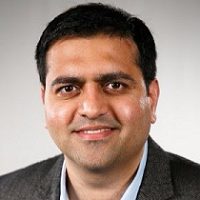 Closing Healthcare Disparity Gaps
Closing Healthcare Disparity Gaps
By Anish Pantakar, SVP, GM, Oncology Software Solutions, Elekta
LinkedIn: Anish Pantakar
LinkedIn: Elekta
The healthcare industry is experiencing transformative changes, with cloud-based technologies leading the charge, particularly AI and informatics software. These innovations, however, have often been viewed as exclusive to urban, well-funded hospitals, leaving rural healthcare centers behind. This disparity poses a significant challenge, as rural areas, home to 46 million Americans, are not immune to complex health issues.
How can we bridge this gap and ensure that rural communities have access to the same level of care and technological advancement as their urban counterparts?
Closing the Healthcare Gap for Rural Americans
There’s a critical need for improved healthcare technology in rural America. Research from the CDC shows this population is more likely to die from major diseases like heart, cancer, respiratory, etc., and have a higher incidence of accidental injury than their urban counterparts.
Geography presents a significant barrier to care. Many rural communities are relatively isolated with low population numbers, which means they have less access to local businesses and services. For example, it is common for patients to travel over 30 miles to receive medical care. The lengthy time away from home and work often prevents doctor visits, leading to missed diagnoses or untreated conditions.
Financial constraints from lost time at work, additional childcare, or lack of health insurance further exacerbate care inequities. Whether carrying an insurance policy or not, more than one-third of rural Americans reported skipping needed care because of costs.
Cloud-based software solutions offer a lifeline in rural healthcare settings and mark a significant step toward closing these disparity gaps.
Cloud Technologies Offer an Affordable Solution for Rural Providers
Cloud and software-as-a-service (SaaS) models have revolutionized healthcare technology solutions delivery, particularly in rural settings. By basing software solutions on patient versus provider numbers, healthcare systems can scale up or down as needed. This flexibility ensures that rural healthcare providers can offer the latest care and innovation without the prohibitive costs associated with traditional software licenses.
One of the most significant advantages of cloud-based solutions is their ability to provide continuous software updates and innovations without needing physical hardware or on-site personnel. Partnerships with technology leaders ensure that rural healthcare providers have access to best-in-class security and scalability, essential for handling sensitive health data and coping with fluctuating patient numbers.
Furthermore, cloud-based EHRs and oncology-specific software bring specialized care closer to rural patients. Detailed treatment scheduling, remote patient monitoring, such as appointment and medicine reminders, and direct communication with care teams significantly improve the quality of care and patient outcomes.
Silicon Valley-grade Technology Benefits for Rural Healthcare Providers
Software innovation moves at a rapid pace. Due to the need for sophisticated hosting capabilities, specialized IT talent, and stringent security measures to protect patient data, it’s difficult for rural healthcare providers to adopt and maintain quickly advancing technology. Cloud-based delivery models alleviate these concerns by offloading the burden of IT management, security, and compliance to technology providers, enabling healthcare centers to focus on patient care without the complexities of technology management.
Additionally, the financial model of cloud services, where providers pay based on usage, allows for more predictable budgeting. The collaborative nature of cloud-based solutions also facilitates remote access by healthcare professionals, bringing specialized care directly to the patient and reducing needless travel.
Current Uses of Cloud-Based Technologies in Rural Clinics
By keeping pace with rapidly changing technology, treatment providers can do more for their patients—narrowing the disparity in healthcare quality between rural and urban areas. With increased access to advanced and tailored solutions, clinics can operate with fewer resources and reduced staff, enhancing the value of cloud-based technologies for rural clinics.
Disease-specific software allows physicians to more efficiently address unique patient needs and care requirements, increasing the level of patient care. For example, oncology-specific systems have been carefully designed to understand the needs of people undergoing cancer treatment. Intelligent communication tools facilitate 24/7 communication between patients and their healthcare teams outside of appointments. By self-reporting symptoms remotely, patients can receive treatment advice without making a trip to the doctor. Treatment visits can also be minimized by scheduling larger radiation doses less frequently, a practice known as hypo fractionation. This is not something a generic enterprise-grade EHR will allow them to provide.
The Future of Rural Healthcare: A Cloud-Enabled Vision
There has been a lot of hype and promise, but we’ve now reached a stage where AI’s potential is becoming a practical reality. The advent of generative AI allows us to access and utilize clinical knowledge more effectively, benefiting clinicians and patients alike. This marks a turning point, making advanced AI applications accessible and affordable through cloud-based solutions, ensuring all customers benefit equally, especially in rural areas. This is the true promise of AI in rural healthcare.
As we look at the next five to ten years, the role of cloud-based technologies in all avenues of healthcare is poised for expansion. Innovations in AI, particularly generative AI, necessitate could-based solutions due to the complexity and resource demands. This is vital for delivering and deploying software in the future.
For rural clinics, these technologies have promise to revolutionize both operational and clinical aspects of healthcare by enhancing staffing efficiency, automating routine tasks, and providing clinicians and patients with access to the latest research and treatment protocols.
